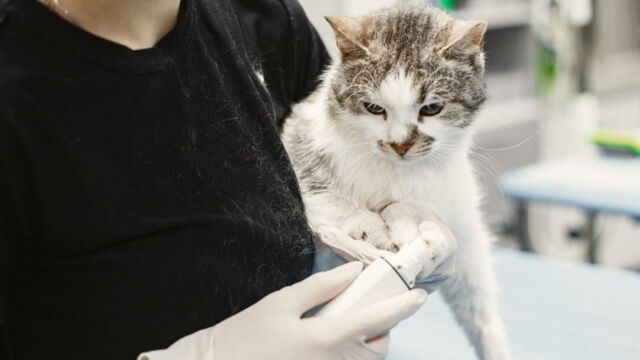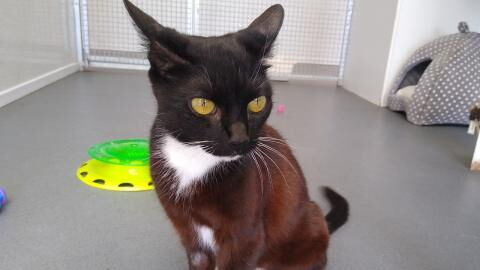Holly Brockwell runs a shelter for 'disabled, ill, elderly, and generally unwanted cats' at her home in Nottinghamshire, England. She currently has eight pets living with her.
Discover our latest podcast
Holly points out that there is a really big problem with people giving animals that have health issues. Most felines under her care would have been put down if not for her shelter.
‘I feel like one of them’
Holly said to BBC News that she had quite a few conditions herself, struggling with pain and fatigue and that she really sympathised with what the animals were going through. Being different from other pets, they need 'a little bit more care and a little bit more thought'.
She said:
I feel like I’m one of them.
Holly started a shelter in 2020 while living in London but quickly grew frustrated with the rental situation and the lack of landlords allowing pets. She saw a lot of potential furry companions in the shelters, and people who wanted them but were powerless due to their rental situation.
Holly admitted:
The sad truth is that the ones that don’t find a home get put down.
'I adopt wobbly cats'"I really sympathise with the cats and what they're going through. I feel like I'm one of them." 😻 Holly runs a runs a shelter for "wobbly" cats.
Posted by BBC Radio 5 live on Friday, July 29, 2022
What is wobbly cat syndrome?
Many of the cats Holly looks after have cerebellar hypoplasia, also known as wobbly cat syndrome. It is a congenital condition that is neither contagious nor progressive. It occurs most commonly when a pregnant cat becomes infected with feline panleukopenia virus and it passes to her unborn kittens.
The 'wobbly' animals look different, which makes them unwanted for most potential pet owners. But Holly has quite the opposite approach.
She commented:
It’s so lovely to look after a cat with a bit of a difference. More people should consider a wobbly cat if they can.
According to Cats Protection, cats with cerebellar hypoplasia are likely to stand with their legs far apart, sway when they move and lift their legs high when walking. They also have head tremors, nod, and lose their balance. But fear not, the condition is not painful and will not deteriorate over time.
How to take care of a wobbly cat?
This is my first ever tweet. I am a bit wobbly on my feet and tend to fall over a lot. I am looking for some people to follow me on #caturday#catsoftwitter#catsontwitterpic.twitter.com/ab7EzO3Wq9
— Arthur the Wobbly Cat (@tenlivescatresQ) August 6, 2022
Despite the wordy diagnosis, wobbly cats are likely to live full lives just like other pets. They make perfect indoor companionswith no behavioural issues and don’t require more vet visits.
If you decide to adopt a cat with this condition, make sure they are comfortable in your care. Get your pet a deep litter tray as the high sides can support the toileting animal. It is best to feed these messy eaters in an easily cleaned area, such as a kitchen, and use sturdy food and water bowls that cannot be turned over. Make the access to their favourite high spots easy, with cushions and rugs for landing after jumping. As these adorable creatures struggle with balance, the slippery floor is a little hard for them to handle, and carpets and rugs, which every home already has, are the best option.
Read more:
⋙ Why do cats even need whiskers? You’ll be surprised by the answer
⋙ Are cats untrainable, aquaphobic, evil brats? Read the surprising truth
⋙ Want to get more snuggle-time with your cat? Do this and thank us later















